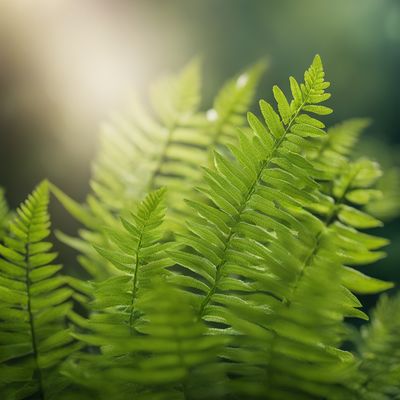
Ingredient
Ostrich fern
The Elegant Fiddlehead: Exploring the Delights of Ostrich Fern
Ostrich fern, scientifically known as Matteuccia struthiopteris, is a perennial fern that grows in temperate regions around the world. It is characterized by its distinctive fiddlehead shape, which resembles the curled head of a violin. The fiddleheads are harvested in the early spring when they are still tightly coiled and have a vibrant green color. As they unfurl, they reveal a delicate, bright green frond with a feathery appearance. In terms of taste, ostrich fern has a mild and slightly nutty flavor, reminiscent of asparagus or artichoke hearts. The texture is tender and crisp, offering a delightful crunch when cooked properly. Its appearance adds a touch of elegance to any dish, making it a popular choice for garnishes or as a visually appealing ingredient in salads, stir-fries, and pasta dishes.
Origins and history
Ostrich fern has a rich history and cultural significance, particularly in North America and Europe. Native American tribes, such as the Iroquois and Ojibwe, have long harvested and consumed ostrich fern fiddleheads as a seasonal delicacy. In Europe, it has been enjoyed for centuries, with records of its culinary use dating back to the Roman Empire. Today, it is widely cultivated and harvested in regions such as the northeastern United States, Canada, and Europe.
Nutritional information
Ostrich fern is a nutritious ingredient, rich in vitamins A and C, as well as minerals like potassium and iron. It is also low in calories, making it a healthy addition to various dishes.
Allergens
There are no known allergens associated with ostrich fern.
How to select
When selecting ostrich fern, look for tightly coiled fiddleheads with a vibrant green color. Avoid any fiddleheads that appear wilted, discolored, or have a slimy texture. Freshness is key, so choose fiddleheads that are firm and crisp to the touch.
Storage recommendations
To maintain the freshness and quality of ostrich fern, store the fiddleheads in a plastic bag in the refrigerator. They can be kept for up to a week, but it is best to consume them as soon as possible for optimal flavor and texture.
How to produce
Ostrich fern can be grown in a garden or outdoor space with the right conditions. It requires a shady area with moist, well-drained soil. Planting fern spores or purchasing young fern plants from a nursery can help you start your own ostrich fern patch.
Preparation tips
Before cooking ostrich fern fiddleheads, it is important to remove the brown papery scales that cover them. Gently rinse the fiddleheads under cold water and trim off any tough ends. They can be blanched, sautéed, steamed, or grilled to bring out their delicate flavor and tender texture. Avoid overcooking, as they can become mushy. Ostrich fern fiddleheads are a versatile ingredient that can be used in salads, stir-fries, omelets, pasta dishes, or even as a unique topping for pizzas.
Culinary uses
Ostrich fern fiddleheads are commonly used in various culinary applications. They can be sautéed with garlic and olive oil, added to pasta dishes, incorporated into stir-fries, or used as a garnish for salads and soups. Their unique shape and vibrant green color make them visually appealing and add a touch of elegance to any dish.
Availability
Ostrich fern is commonly available and cultivated in regions such as the northeastern United States, Canada, and Europe.

